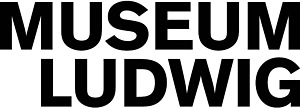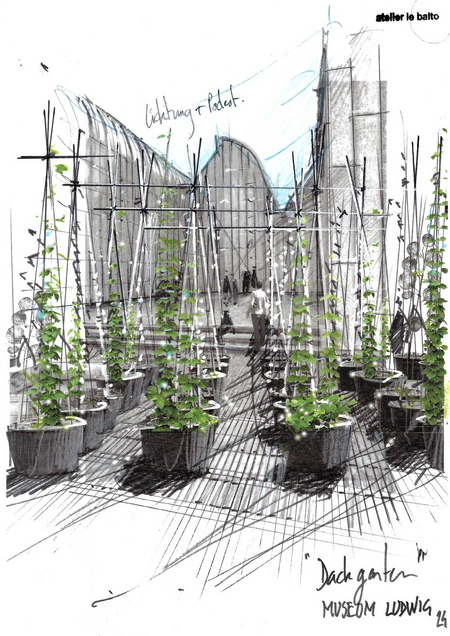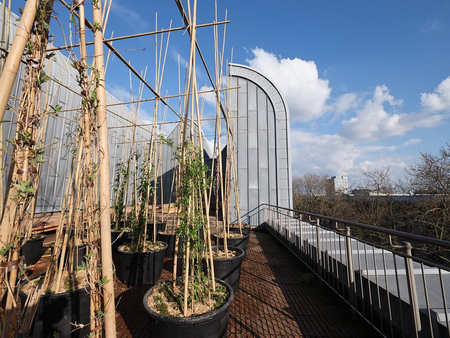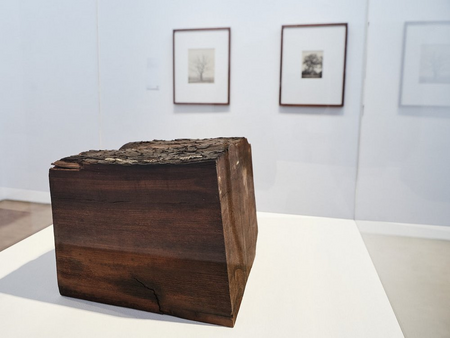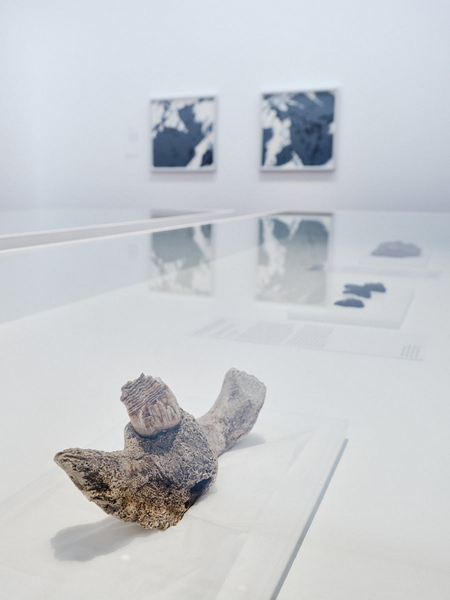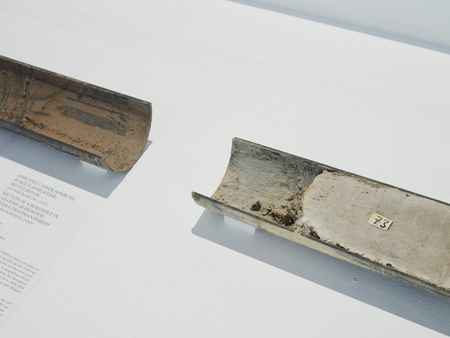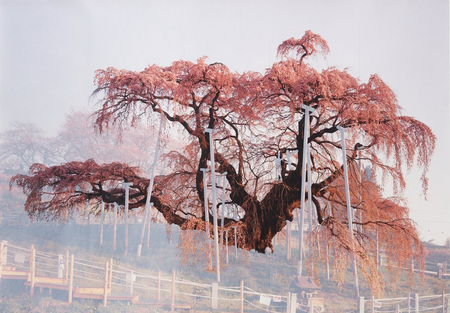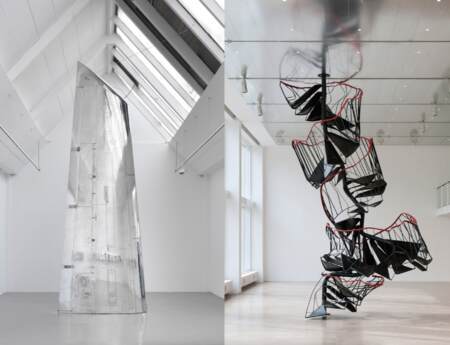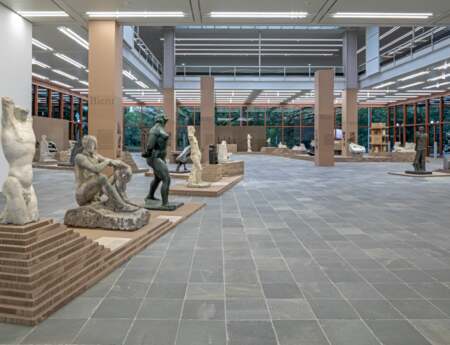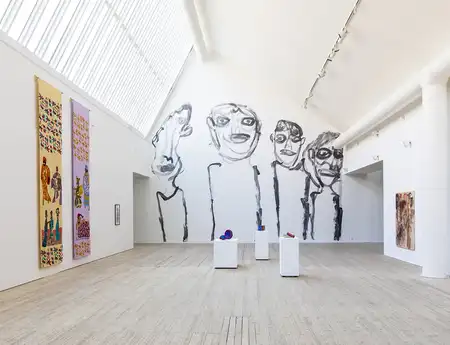HERE AND NOW at Museum Ludwig. And Yesterday and Tomorrow
Through its recurrent HERE AND NOW series, the Museum Ludwig questions conventional ways of exhibition-making and examines its own work as an institution. The tenth project in the series, And Yesterday and Tomorrow, brings together selected contemporary and historical artworks with scientific material to explore our experiences of time and the places we occupy. Moreover, by including various disciplines, the exhibition provides a space for collective learning. This is also the Museum Ludwig’s first demonstrably climate-neutral show.
Using a focused selection of works, materials, and texts, the here and now is related to yesterday and tomorrow. To experience “here,” we turn our gaze to the ground on which the museum stands. What does the soil under our feet reveal? How is “here” even defined when the tectonic plates we stand on move almost as fast as our fingernails grow? What does the museum’s address at Bischofsgartenstrasse, which is to a great extent sealed off from its surroundings, refer to?
With this in mind, Chargesheimer’s photographs of basalt columns can be read as more than abstract black-and-white configurations and Gerhard Richter’s paintings of the Alps as reminders of the continual fluctuations of the earth’s surface and human existence. Tacita Dean’s impressive work Sakura (Taki I), the image of a thousand-year-old cherry tree whose supported branches are in bloom, visualizes the ephemerality of our personal present. Like layers of earth, the growth rings of trees can be consulted as naturally formed archives that speak of events and conditions that existed before our own memories began. What will the future be like? Where can we find tomorrow already hinted at in our terrestrial here and now?
Below us, the Eurasian Plate, with all its strata and faults, constantly shifts, rises, and sinks, while overhead, clouds, whose forms are interpreted by meteorologists to forecast the weather, move across the sky. Historical photographs of impressive cloud formations by Gustave Le Gray, Charles Marville, and Alfred Stieglitz are shown alongside sketches for a new planting scheme developed by landscape architects atelier le balto especially for the roof terrace of the Museum Ludwig. With that the Museum Ludwig is responding to the Bischofsgarten, an tenth-century garden once located on the present site of the museum. HERE AND NOW at Museum Ludwig. And Yesterday and Tomorrow traverses both the inside of the museum and its roof, where visitors can sit in the new garden while watching the clouds pass by.
During its seven-month run, the exhibition will be periodically reconfigured, with individual works changed to create new ensembles. This transformation will be accompanied by Yoko Ono’s song I Love You Earth, in which the artist addresses our planet with the line, “You are our turning point in eternity”. And Yesterday and Tomorrow juxtaposes contemporary works with historical works and actual landscape architecture while scientific fields such as geology, dendrology, and archaeology play a visible role.
Within the scope of this exhibition, the Museum Ludwig is cooperating with PD Dr. Silke Trömel, University of Bonn, Institute of Geosciences/ Dr. Alexander Kelbch, Deutscher Wetterdienst, Offenbach a.M./ Dr. Martin Salamon, Geological Survey of North Rhine-Westphalia, Krefeld/ Prof. Dr. Michael R. W. Amler und Julia Friedel, Institute of Geology and Mineralogy, University of Cologne/ Prof. Dr. Marieke van der Maaten-Theunissen, Institute of Forest Growth and Forest Computer Sciences, TUD Dresden University of Technology/ Wuppertal Institute for Climate, Environment, and Energy.
The First Climate-Neutral Exhibition:
And Yesterday and Tomorrow is the Museum Ludwig’s first demonstrably climate-neutral exhibition. To conserve natural resources, the show runs for an extended period of seven months. The use of energy-saving LED illumination ensures a reduction in the overall consumption of electricity, which is sourced entirely from hydropower. Carbon dioxide emissions have been lowered by minimizing loans and concentrating on works in the museum’s permanent collection; any necessary transportation was undertaken in combination with shipments for other projects. As with Green Modernism: The New View of Plants (2022–23), our pilot project for a sustainable exhibition model, print material has been kept to a minimum and produced using mineral-free ink on paper certified by Blue Angel. A report on project-related greenhouse gases will be prepared with the goal of offering a demonstrably decarbonized, climate-neutral exhibition program at the Museum Ludwig in the long term. Our net zero target is not possible without carbon compensation for unavoidable emissions. This compensation supports an environmental protection project in Germany.
For further information see HERE AND NOW at Museum Ludwig. <br> And Yesterday and Tomorrow - Museum Ludwig, Cologne (museum-ludwig.de)
